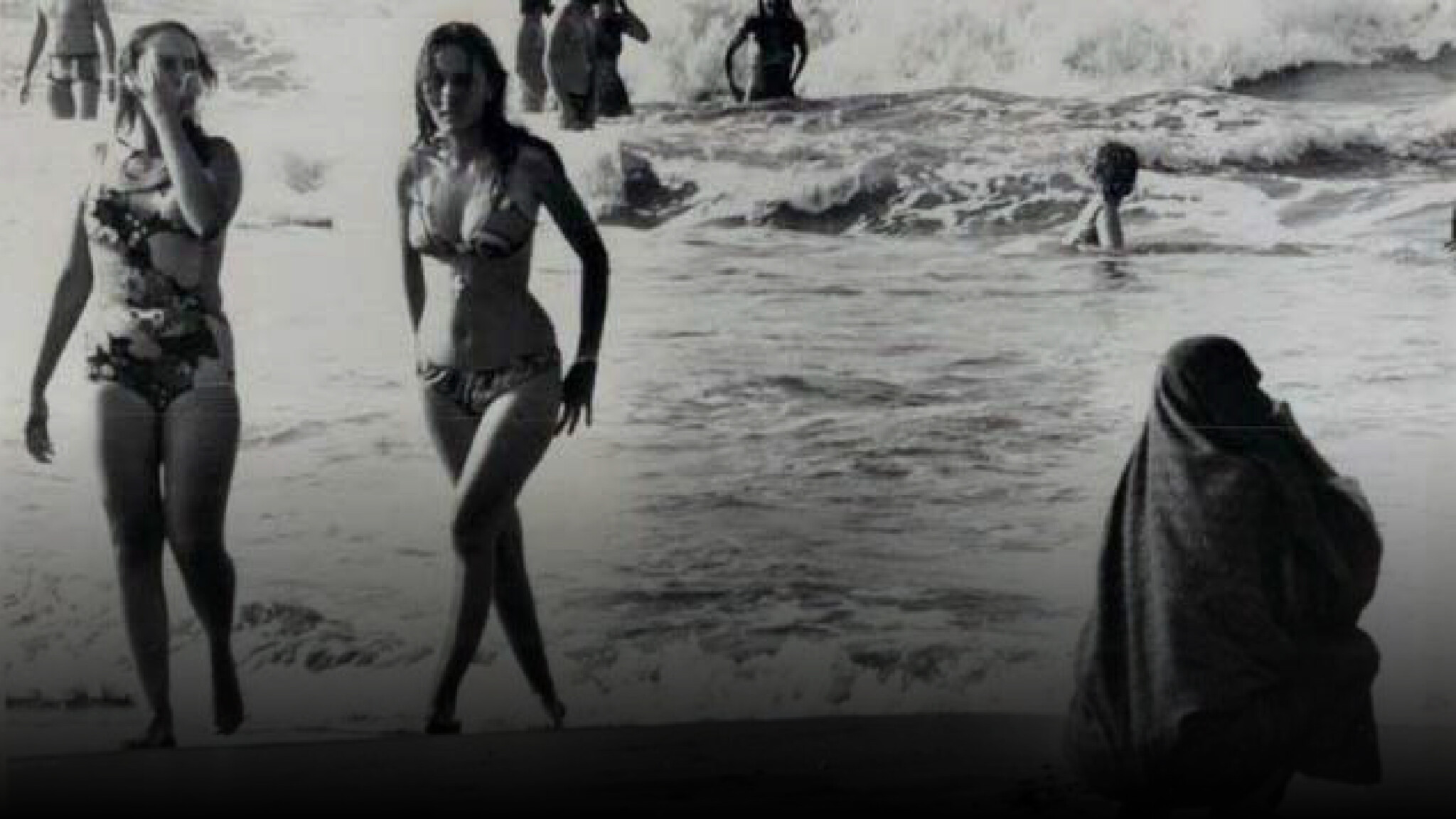In a world ablaze with conflict, belief systems are once again playing a central theatrical role. Iran’s alignment with proxies in the war against Israel, and the growing performative posturing across both Islamic and Western ideological landscapes, expose the deep entanglement between performative culture and the shadow side of religion. What if the veil is not merely cloth, nor modesty, or even control? What if the veil is performance itself? What if the sacred and the secular have converged into a shared addiction to spectacle?
Enjoy independent, ad-free journalism - delivered to your inbox each week
The Iranian regime has long turned religion into an optical theater with a local and global stage. The “Supreme Leader” speaks from a literal elevation above the people. Women are beaten in the streets not merely for being unveiled, but for disrupting the aesthetic of piety. Perhaps we’ve misread the nature of this violence. It’s not just misogyny, it’s dramaturgy. A heretic doesn’t just “offend” God; she breaks character. She’s dangerous because she interrupts the play. The same goes for a gay man, etc.
Consider how Iran, in this moment of regional upheaval, performs its righteousness not just through fundamentalistic sermons and sayings but through weaponized theater to enforce fear. Mourning rituals are state-sponsored events. Public executions are staged as spectacles of justice. Martyrdom is curated as propaganda opera.
Religious leadership is indistinguishable from “holy” scenes, symbols, and sentiment. The state becomes playwright, prophet, and punisher. To step out of the narrative is to cease to exist politically, militarily, religiously, ideologically, familiarly, and economically.

Acts of narrative rupture
Amidst the chaos, a significant number of political prisoners in Iran broke free, literally and metaphorically, from the machinery of this narrative. Waves of prisoners have managed to escape from different prisons, and have been released under immense pressure. Real-life can be better than fiction sometimes. Breaking Bad, eat your heart out.
Some are crawling out of years of solitary confinement. Others emerge from shadow trials and unjust sentences. These aren’t just escapes from walls but acts of narrative rupture. These women and men are reclaiming authorship over their stories. In a state where every breath is staged, freedom isn’t just corporal. It’s epistemological. To walk out of an Iranian prison is to walk out of a script written by a religious and ideological narrator, a.k.a sadist puppeteer.
This dramaturgical impulse isn’t exclusive to Iran, although this narrator is definitely one of the cruelest on the global stage. It extends into the West, where ideological movements can adopt their liturgies of belonging – whether feminist, decolonial, or otherwise. Identity must be declared, policed, and displayed publicly.
Ladies and gentlemen, she improvises
There’s a deeper irony. The Islamic Republic of Iran has cast itself as the defender of the “oppressed”, while it suffocates its population using God’s name in vain. It’s no accident that Tehran uses the Palestinian struggle as a propaganda stage on which to reassert moral dominance.
Iran rules its local and global casting to fight this holy war. What is being defended is a monopoly on pain connected to “righteousness”? Iran claims exclusive rights to “holy” suffering and sacrifice. In this schema, Israel isn’t just an enemy; it’s a necessary antagonist in the religious and ideological theater of “divine resistance”.
The veil isn’t just a physical object but a semiotic device used to denote alignment with the script. It is not just about modesty, but about allegiance. To wear it or not wear it is to signal one’s relationship to power, narrative, and the director. A woman without a veil is not merely bare-headed; she’s unscripted. She threatens not only dominant morality, but coherence in the streets of Iran. Ladies and gentlemen, she improvises! She comes alive from the authentic core of her soul.
Now that kind of improvisation is the most dangerous one. It ruptures the suspension of disbelief. It forces an audience to confront what is real. This is why Mahsa Amini, and so many others, had to die. Their bodies became errors in the playbook. They unveiled the darkness almost effortlessly. The scheme of unveiling should have been irrelevant anonymity, but the coercion has turned it into a low-life challenge.
Ritualization of power
Meanwhile, in Western discourse, solidarity is often reduced to aesthetic gestures such as filtered photos, protest hashtags, or statements at music festivals. These are often performative in the worst sense. Declarations without cost at best, and alignment with the Iranian propaganda opera at worst. We perform our alliances, just as regimes perform their brutality. In both cases, the performance can become a substitute for truth.
Iran’s regime fears not only dissent but ambiguity. It requires everyone to pick a side, wear a symbol, and speak a line. But the most radical act today might be silence. Not the silence of apathy, but the silence of refusal to chant, mirror, and mimic. The refusal to perform grief on cue. This isn’t passivity. It’s rebellion. It’s choosing not to be cast.
Religion’s shadow isn’t just repression, male dominance, and thought gone so terribly bad, we should feel ashamed as a global collective and human species. It’s performance without introspection; the ritualization of power. It’s “divine” authority granted to those who remember their lines and execute their scenes with malice. The challenge isn’t to abolish belief only but to deconstruct the stage.
To live beyond performance is terrifying. It requires doubt and search. Iranian women aren’t simply asking for less religion. They’re demanding unrehearsed lives. That’s what regimes cannot allow. Perhaps, in the West, we too must examine how often we trade freedom for the safety of a role.
Every time I watch that specific scene, I cry
Let me confess something that sounds trivial in contrast. In the Western, secular, and from the Iranian regime’s perspective utterly profane movie Mamma Mia with Meryl Streep, there’s a scene where women drop everything, so their brooms, bundles of wood, and burdens. The women dance together to ABBA’s Dancing Queen.
One throws a pile of sticks from her back. Another leaves a man helpless atop a ladder, and so on. They reclaim their time, energy, and care. Every time I watch that specific scene, I cry. Pathetic and far from the religious and ideological spectrum Iran finds itself on for many years? Sure. But it reminds me of something sacred: the beauty of defiant and synchronized joy.
It’s a privileged Western fantasy clip. But it also illustrates what so many in Iran haven’t tasted in the last decades, namely the right to break into public dance. I watch this scene with trembling because it shows — in the simplest, almost childish way — what freedom could look and feel like. What the end of the performance might be.
I count the days with clenched fists and wet cheeks, waiting for the moment when Iranian women can dance in their streets, not for the West, but for themselves. Those in the West who deny the reality of Iran’s nuclear arsenal, who twist facts and relativize oppression, should feel shame. If not for their ignorance, then for their complacency in Iran’s propaganda opera. For Iran’s liberation will be a global event. Art, politics, and conscience will finally meet where they should: in the unscripted, unstoppable beat of freedom.




Comments (0)
Only supporting or founding members can comment on our articles.